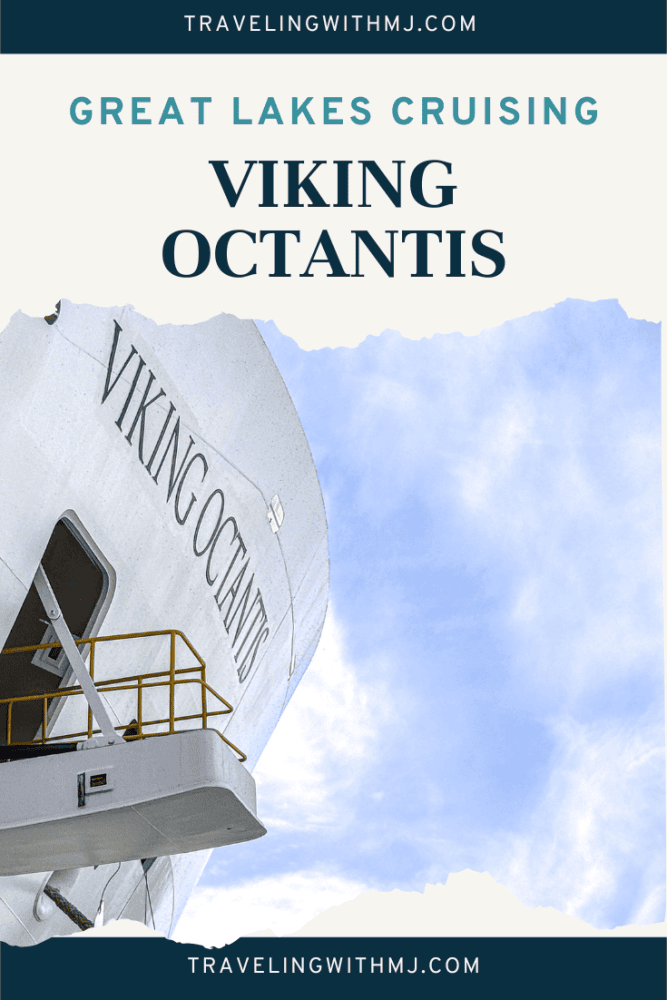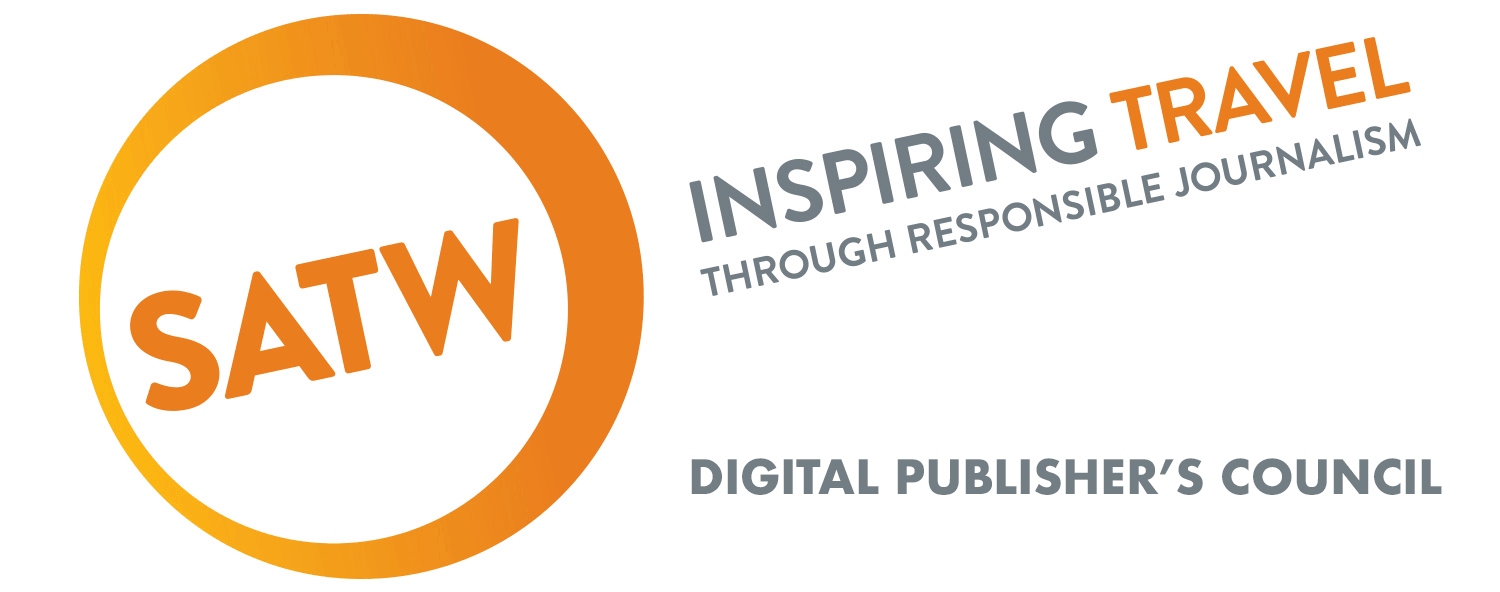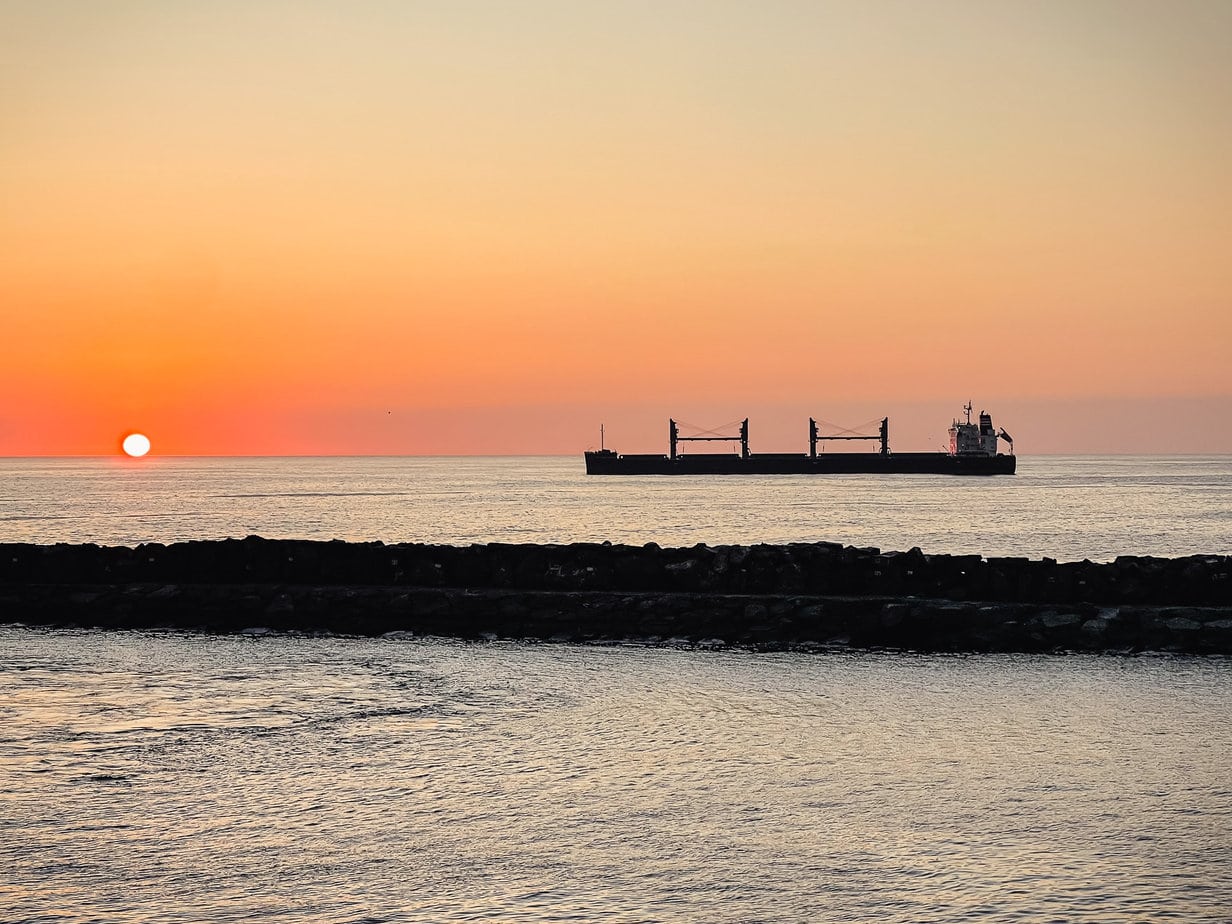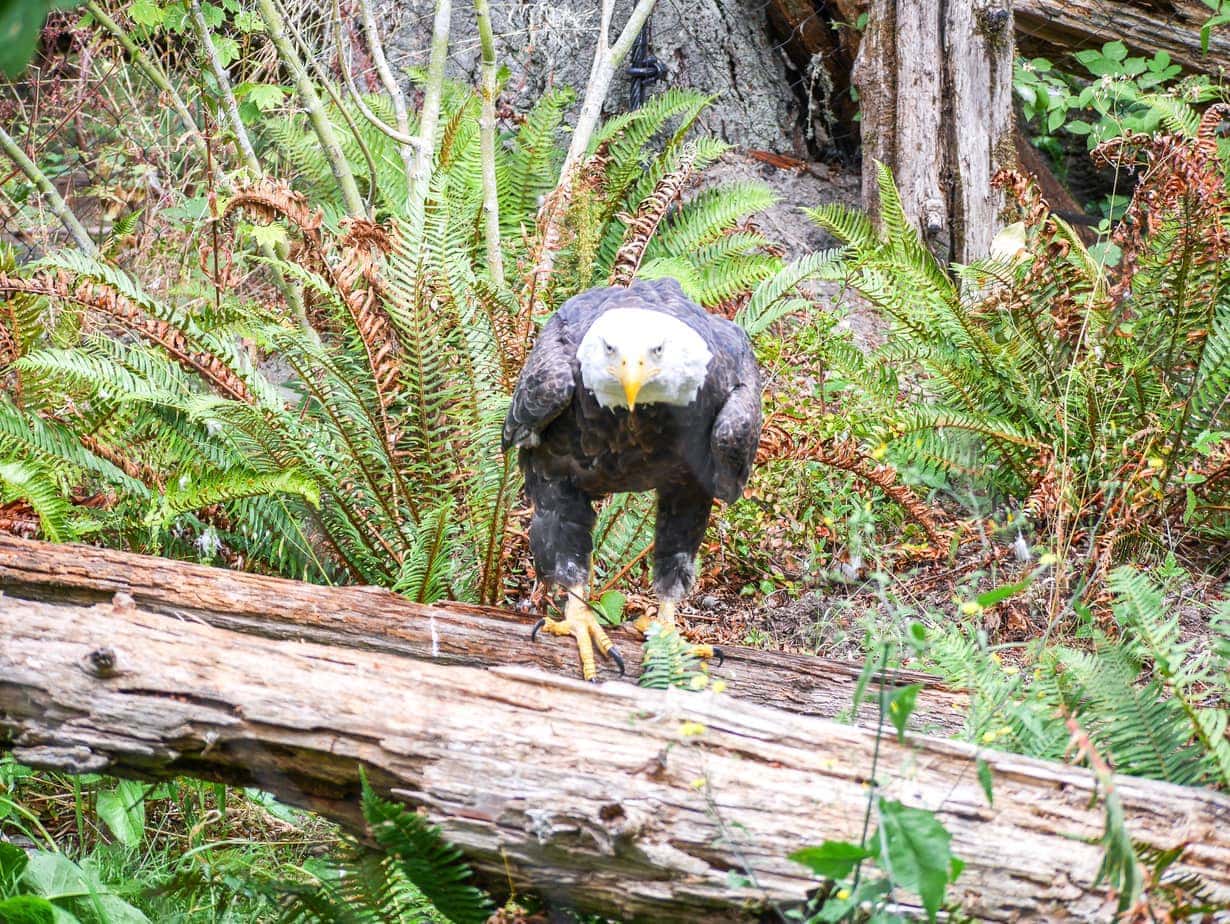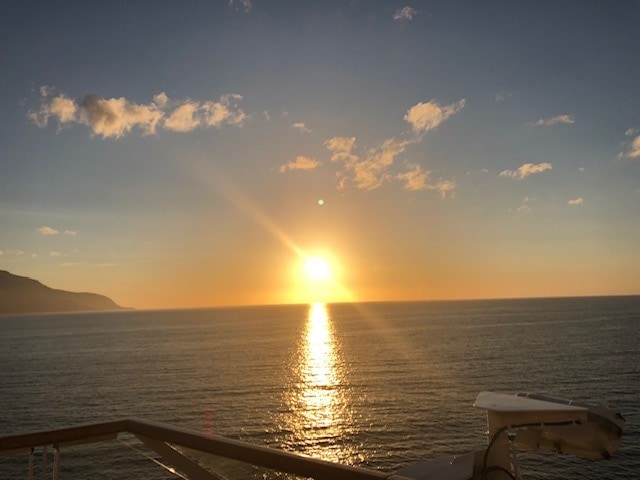The Great Lakes of North America are five connected bodies of water in the eastern and midwestern part of North America. All of these lakes, except for one, lie along the Canada-U.S. border. Collectively, the Great Lakes form the largest body of water in terms of surface area.
As a Pacific Northwest resident all of my life, I have little familiarity with vacationing on the Great Lakes, a childhood experience that many friends look back on fondly. When an opportunity came up for a cruise on the Great Lakes on Octantis, one of Viking Cruise Lines’ expedition ships, I was eager to check it out.
We are unapologetically cruise lovers. Big ships, small ships, and ships in between. Oceans, rivers, canals. We enjoy them all for different reasons, different occasions, and different experiences. We believe there’s a cruise that’s right for most every kind of traveler. It’s just a matter of considering your interests and preferences and matching them up with a cruise line and cruise itinerary that meets those preferences.
Knowing where to start, and the questions to ask may seem complicated. That’s why we continue to write about different types of cruising, different ships, different cruise lines, and different itineraries. And we go in depth, all in one story, so you don’t have to hop around looking for everything. You’ll find everything you need to know right here – cabins, food and beverage, pricing, itineraries, what we did, any mistakes we made, and all of our recommendations. Our goal is to help you make an informed cruise choice.
Viking has two expedition ships, the Octantis and the Polaris. And while they ply the frigid waters of the Arctic and Antarctic, they have a Great Lakes season as well. We’ve sailed on Viking ocean and river ships, so were curious to see how the expedition ship compared.
We sailed on the 8-day Niagara and Great Lakes itinerary, from Toronto to Milwaukee. Here’s what we discovered.
NOTE: We received a complimentary sailing as media covering the ship and the itinerary.
The Great Lakes
The five great lakes are Lake Superior, Lake Michigan, Lake Huron, Lake Erie, and Lake Ontario. Use the mnemonic HOMES to remember the lakes (Huron, Ontario, Michigan, Erie, Superior).
Lake Superior is the largest of the five lakes, while Lake Erie is the smallest. Lake Michigan is the only lake that is entirely within U.S. boundaries. The other four lakes straddle the Canada-U.S. border. Lake Superior is the furthest west of the lakes, and all flow eastward into the Atlantic Ocean via the St. Lawrence River.
History and Economic Significance
In terms of historical and economic importance, the Great Lakes region is one of the most important regions in North America. In the 18th century, control of the Great Lakes region was contested by the French, British, Americans, and various Native American tribes. During the War of 1812 they became a battleground between the Americans and British.
In the subsequent decades of the 19th century, and into the 20th century, the Great Lakes region became one of the most important industrial hubs of both Canada and the United States. Cities bordering the lake, such as Chicago, Detroit, Cleveland, Buffalo, Windsor, Hamilton, and Toronto, were some of the key industrial and commercial centers of the 20th century.
The Great Lakes are not only the largest bodies of water in the world, they are also the centers of some of North America’s biggest cities. While the lower Great Lakes have been densely populated and heavily developed since the 19th century, however, there are still many unpopulated or wilderness areas, particularly along the shores of the upper lakes.
The cruise itinerary featured a mix of those big cities and smaller ones, promising a nice combination of what makes the Great Lakes so special.
The Ship: Viking Octantis
The Viking Octantis is a Polar Class 6 purpose-built expedition vessel delivered in December 2021. This is a small ship with a passenger capacity of 378 with 189 staterooms. The ship is named after the Sigma Octantis, the south star, and its main itineraries are Antarctica and the Great Lakes, where the vessel conducts scientific missions during its voyages. This ship was the first of Viking’s new line of expedition ships.
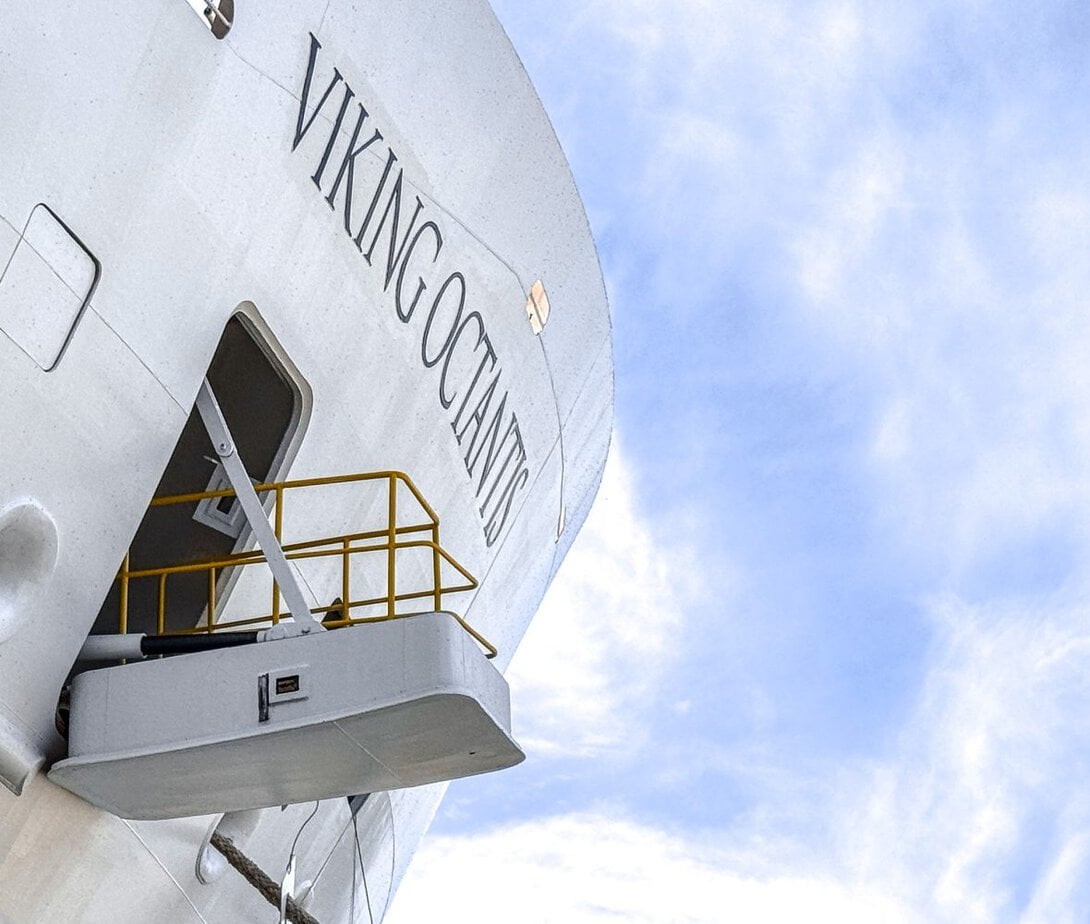
Viking has a strong focus on ship recognition, and all ocean ships are identical and so are the expedition ships. Even transitioning from ocean to expedition is a familiar feel, with many of the same public venues, artistic touches, and dining experiences the same. This has been a conscious Viking choice, ensuring that guests who have been on a Viking cruise before will feel right at home and can focus on the destination rather than learning about a new ship layout.
- Deck 6 – Deck 6 features the Owners Suite and four Explorer Suites.
- Deck 5 – Deck 5 features the Aquavit Terrace, the Library and Living Room, Mamsen’s, World Cage, and the pools.
- Deck 4 – Deck 4 has staterooms, and the lower level of the Explorer’s Lounge.
- Deck 3 – Deck 3 has staterooms, as well as The Bow, The Shelter, the Nordic Shop, and the Aula upper level.
- Deck 2 – Deck 2 features staterooms, aas well as Expedition Central, the Fitness Center, Salon, Nordic Spa, Hydrotherapy Pool, Blue Room, Aula, and the Finse Terrace
- Deck 1 – Deck 1 features Guest Services, The Hide, Manfredi’s Italian Restaurant, The Restaurant, The Science Lab, and the upper level of The Hangar.
If you’ve sailed with Viking before, you’ll recognize some familiar locations.
Restaurants & Dining
Viking has several restaurants on board and all are covered in the cruise fare. While the options are similar to Viking ocean, there are some notable differences.
The Restaurant
While The Restaurant (deck 1) is the primary dining area on Viking ocean vessels, it is not on their expedition ships. This was a difference we didn’t understand until we were onboard. On Octantis, The Restaurant is a specialty dining option (no additional fee) and requires reservations, rather than seating diners on a walk-in basis. We were not able to get reservations in advance as we booked rather last minute. While that seemed disappointing, at first, once we were onboard and understood better, it was no big deal. In fact, we stopped looking for reservation slots (there were some available) as we were happy with the diversity of other options.
Manfredi’s Italian Restaurant
With the same menu as on the ocean ships, Manfredi’s (deck 1) has always been one of our favorites. The menu offers a couple of daily specials, along with the standard menu of Italian favorites. The steak florentine is Tony’s favorite, and I’m a fan of all the pasta dishes. The serving sizes are plentiful and easily shared. If you have’t sailed on Viking and/or eaten at Manfredi’s in awhile, there are some menu changes. Not all have been well received.
You do need reservations, which we didn’t do until we were onboard. The Viking app wasn’t showing any existing reservation times, but a quick call got us set up. At the last minute – and I mean the very last minute – we saw friends standing in line waiting to be seated as well. Staff was graciously accommodating in our request to dine together.
World Cafe
On the expedition ships, the World Cafe is the primary dining venue. It’s a casual buffet and grill and offers a variety of freshly prepared dishes. We generally avoid buffets, finding the food typically sub-par. That was not the case in this World Cafe. In fact, we ate there every night but one (when we had dinner with friends at Manfredi’s).
A highlight of the World Cafe was the grill – offering cooked to order steaks, chops, burgers, and lobster – located directly behind the buffet. Yes, you can have lobster every night! While the lobster tails are on the small size, the chef will ask you how many you want. It makes a great seafood only option, or a delicious surf and turf combo.
Don’t let buffet prejudice get in the way of checking this out!
Mamsen’s
This casual spot is named after Mamsen, the Hagen family matriarch and serves Norwegian specialties such as waffles (made according to the Mamsen recipe), open-faced sandwiches (many with the traditional Norwegian brown goat’s cheese), and split pea soup. It’s open for breakfast, lunch, tea or a snack in the evening.
It’s embarrasing to admit, but I’ve never indulged at Mamsen’s. Tony has picked up a sandwich, but that’s it. Every time we sail with Viking, I remind myself to have a waffle with fresh fruit. Somehow, I always forget. Next time!
Viking Octantis Cabins
There are six categories of cabins and suites. Most of the cabins have a Nordic balcony, a ledged window that rolls down opens. It is supposed to create a balcony-like feel while creating more indoor space. It seems passengers love ’em or hate ’em, but we didn’t have a strong feeling one way or the other. Expedition ships are not generally sailing tropical itineraries, so it may matter to you. If it does, there are a few premium cabins with walkout balconies – Explorer Suites (four) and Owner’s Suite (one).
We stayed in cabin 3069, a Deluxe Nordic Balcony (DN3 ). At 215 square feet, the cabin is on the small-ish side, but very well laid out. As long as you put stuff away, there’s plenty of room for lounging, having breakfast in your room, and relaxing.
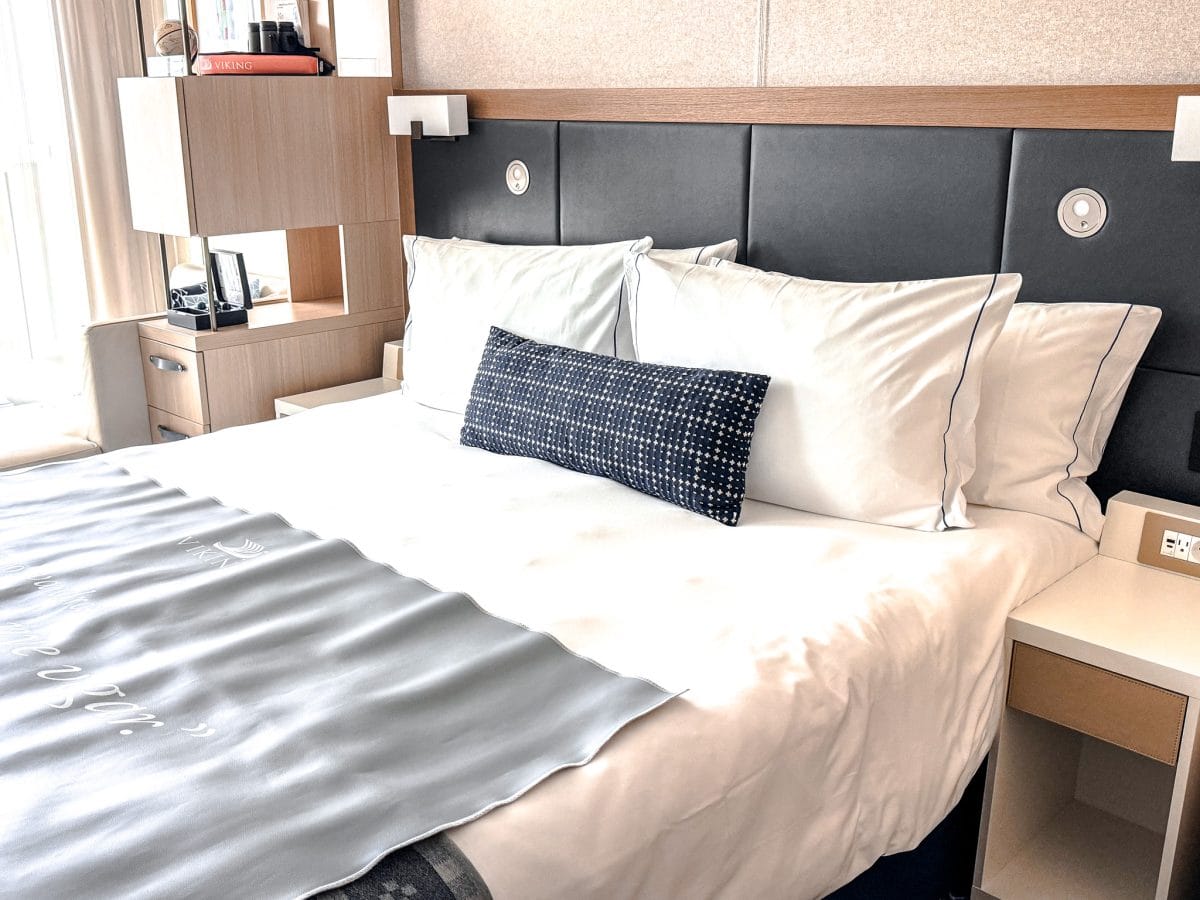
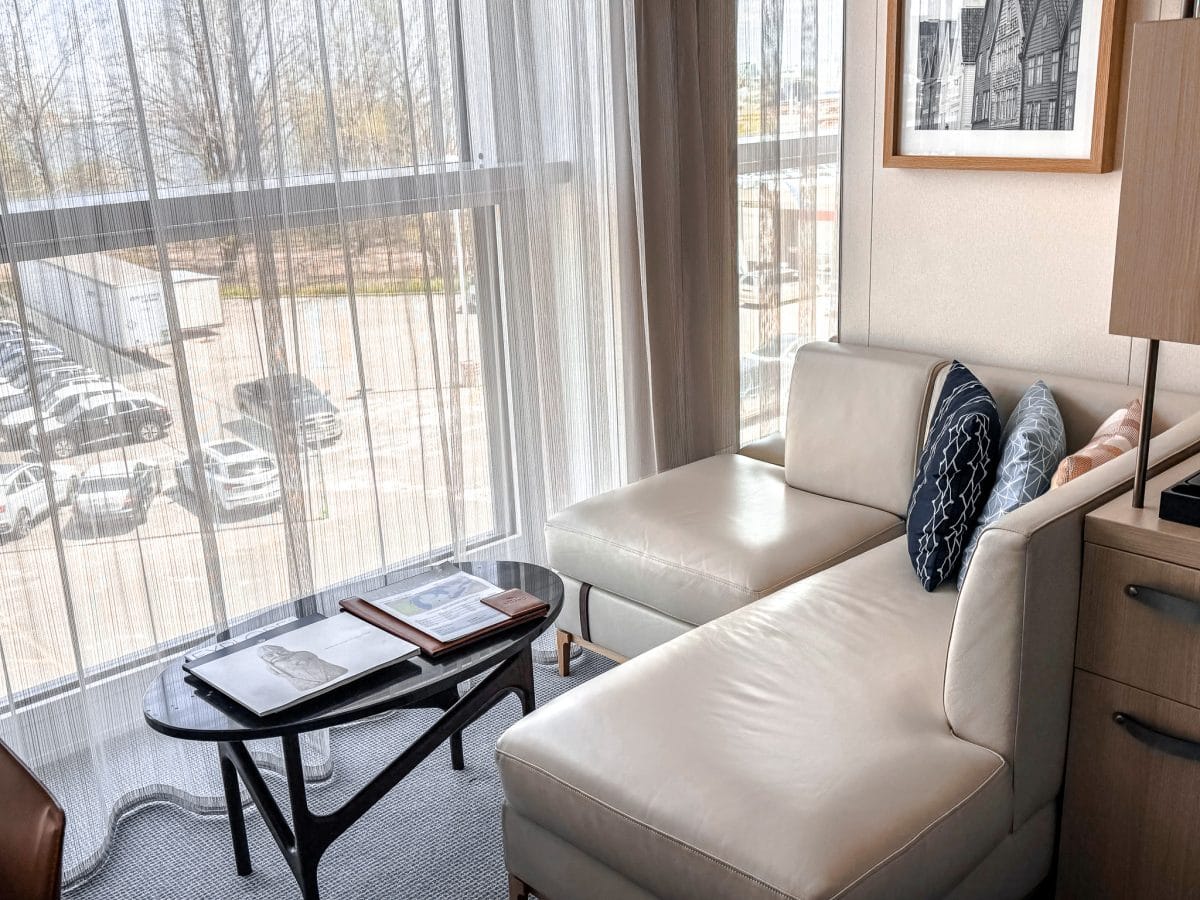
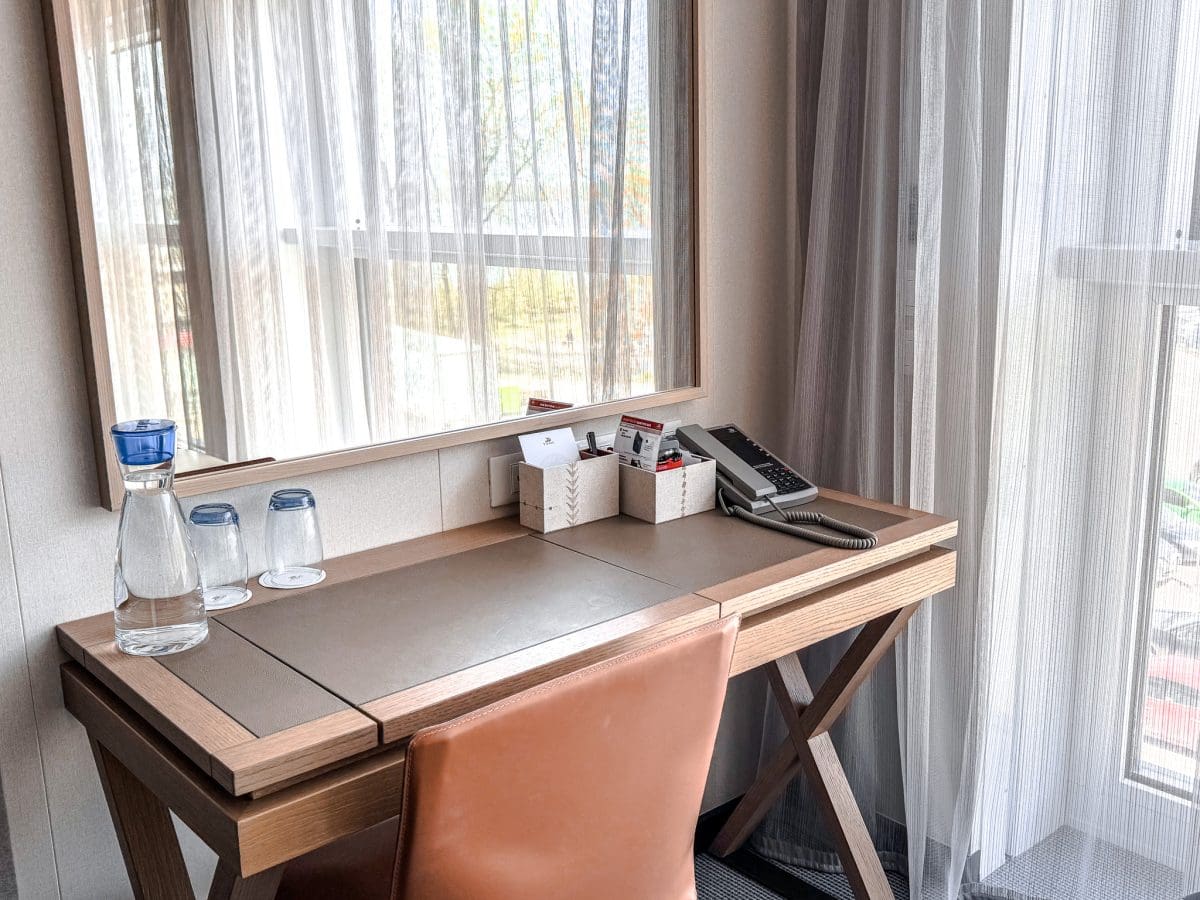
Our stateroom featured the following amenities: A king-sized bed, a sitting area with two chairs, large flat-screen television with on-demand movies, complimentary 24-hour room service, free wifi (remarkably strong signal), robe and slippers, mini-bar with soft drinks, water & snacks (refreshed daily), purified waters replace daily, upscale bathroom products, Floor-to-ceiling drying closet, and more.
My recommendation for cabin selection is to select the best that your budget allows. The entry-level cabins are smaller than the suites, of course, so don’t let budget put you off the reason to sail. Look for special pricing, and take a close look at the additional amenities offered in each stateroom category. When you do the math, you can determine the true value of what’s included and where you get the most value.
Regardless of your cabin choice, you’ll have great views, a cabin full of amenitites with the primary difference being booking priority (restaurants and excursions) and location of cabin. The Explorer and Owner’s Suites are substantially larger, have true balconies, and include the Silver Spirits package and other premium amenities.
Niagara and Great Lakes Cruise Itinerary
Our itinerary was a 7-day Niagara and Great Lake itinerary, traveling south from Toronto to Milwaukee. We booked rather last minute, so didn’t make a lot of advance excursion plans, preferring to play it by ear. I wouldn’t typically recommend that for a Viking expedition cruise, as it likely means you’ll miss out on the “toys” (the specialty watercraft), but it our case it worked out just fine.
I always recommend arriving at least one day early for a cruise. Delays happen, and that can mean cancelled flights, late arrivals, missed connections, and jetlag. Toronto is a major airport, so it’s easy to find flights into the city. Flying in a day early means you can avoid travel stress and have time to explore one of the great cosmopolitan cities in Canada.
We stayed at the Fairmont Royal York (more info here), a stately landmark since its opening in 1929. History and luxury meet in this majestic hotel in Toronto’s downtown core. The hotel is located directly across from Union Station, making it easy to use the Union Pearson Express from the airport. Trains run every 30 minutes, and we think it’s the easiest option to and from Pearson Airport.
Learn more about the Fairmont Royal York and other downtown Toronto hotels here.
Toronto, Ontario (Canada)
Board the ship and settle in. Your embarkation time is assigned when you get all your documents, and if you follow that schedule, there’s little line up. We were quickly processed and boarded, with our first stop in the lounge for a safety briefing and glass of champagne. Shortly after that we were off to our cabin.
We headed to the World Cafe for a light lunch, then took some time exploring the ship. Sinced
Welland Canal & Niagara Falls (Port Colborne), Ontario
Like river cruising, Great Lakes cruises need to navigate canals as they sail. On Lake Ontario, that would mean the Welland Canal. Built between 1824-33 as a mean of bypassing Niagara Falls, the Welland has eight locks that raise a lower ships a differential of 326 feet between Lake Ontario and Lake Erie. This system of canals created a waterway for trade, ot just for Great Lakes cruise ships, and is a vital part of commerce today.
Port Colborne is the gateway to Niagara Falls, arguably the star of this cruise itinerary and one of the most popular shore excursions.Niagara Falls is North America’s largest and most powerful cascade and is a group of three waterfalls. Horseshoe Falls, the largest of the three falls straddles the border between Canada and the United States. The smaller American Falls and Bridal Veil Falls are within the U.S. To call Niagara epic is not just adopting youthful slang. The combined falls have a vertical drop of more than 160 feet and during peak daytime hours, more than 5.9 million cubic feet of water goes over the crest every minute.
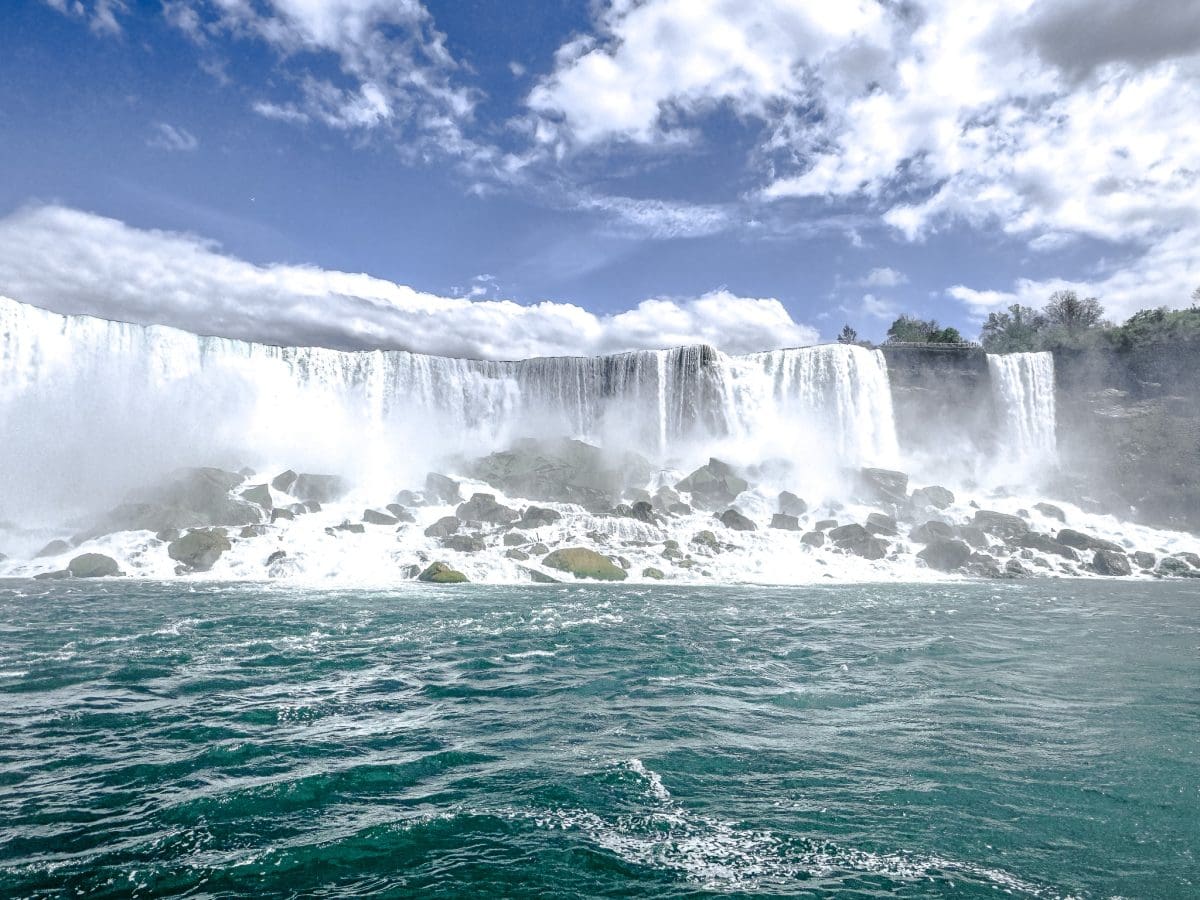
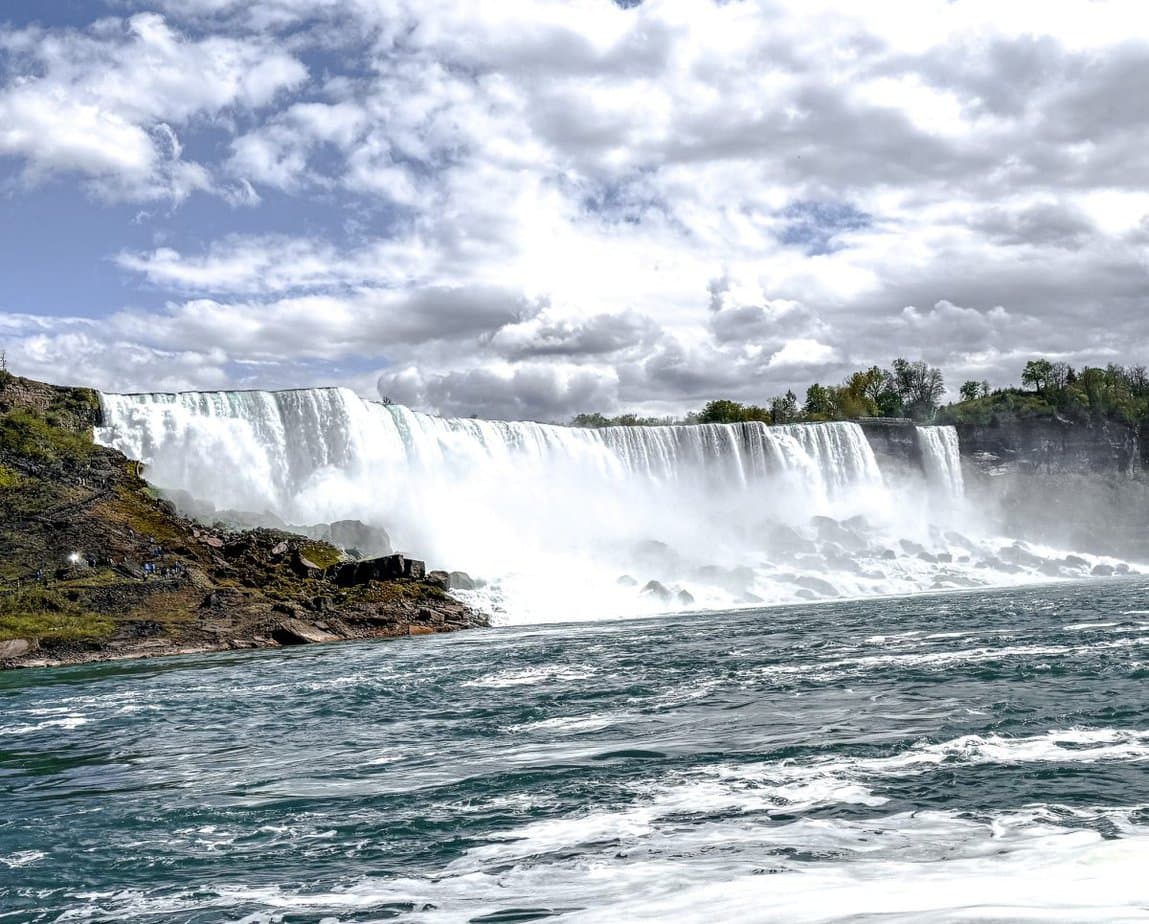
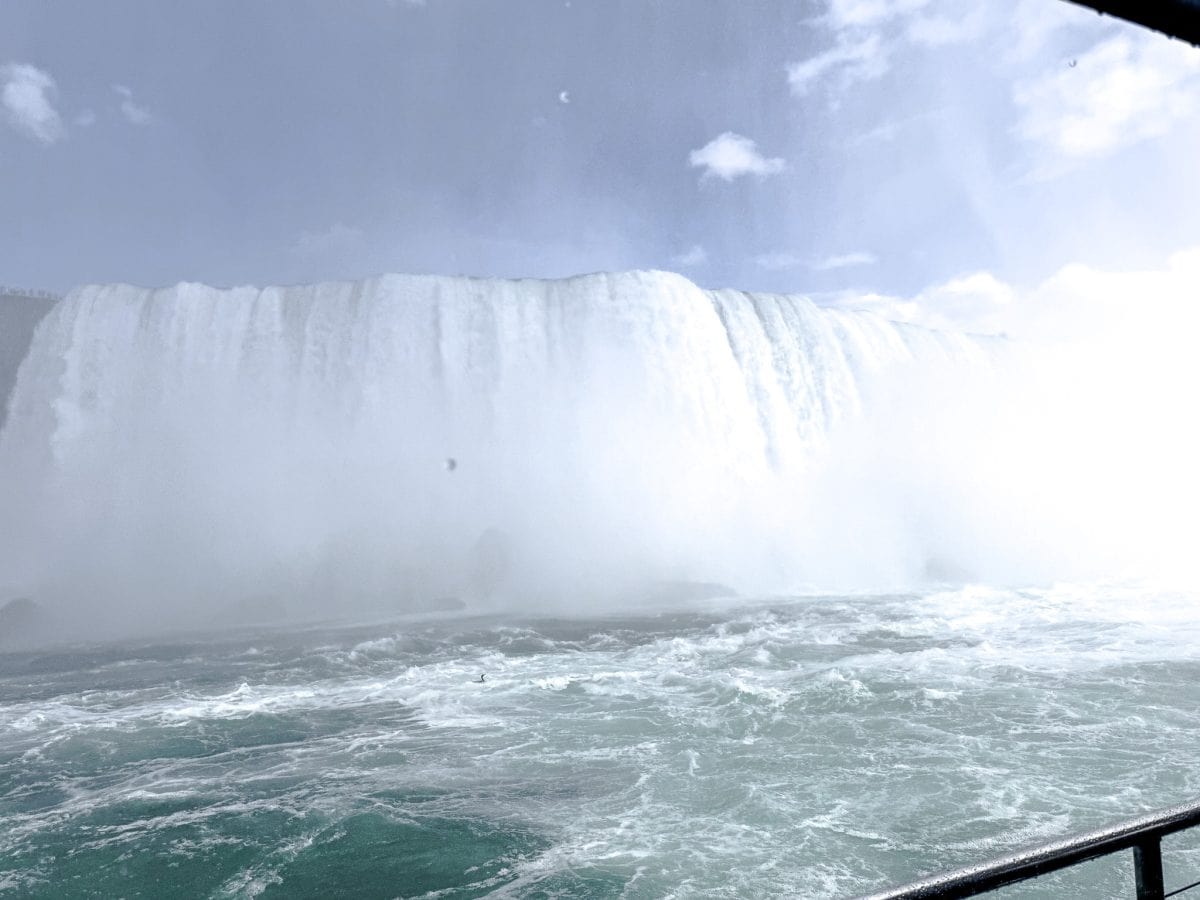
We took the included tour, Niagara Up Close, which went to the Falls. While there were lots of excursions choices, for most people we talked, seeing the Falls up close was a focus of the trip. this excursion. This tour travel by bus from the pier to the Falls, where we then had a short walk to Falls where put on a rain poncho and boarded a boat to take us to the foot of Horseshoe Falls. Seeing the Falls at close range was wonderful and we’re glad we made this choice. If you’ve been to the Falls numerous times, there were other excursion options (fee applies) that included learning more about the canal as well as wine tasting (Niagara has a wine trail).
Point Pelee, Ontario
Point Pelee is a Canadian National Park with the largest freshwater marshes on the Great Lakes. The stunning nature area is further proteccted by an international treaty. The location is a convergence of two major bird migration flyways, and the ship takes precautionary measures to make sure they don’t disturb the migration. All but minimal light needed for safety are turned off at night, passengers are advised to keep blinds closed at night, and the ship tries to minimize its footprint in this important ecosystem.
We were excited about the nature opportunities and signed up for two excursions in Point Pelee – an included zodiac trip on Lake Erie (hoping to see wildlife) and a marsh boardwalk hike (additional fee) to learn more about the National Park’s marshes and wetlands (again hoping to see wildlife).
Unfortunately, weather intervened, and the swells were too significant to launch any watercraft for exploration or to get us to safely to shore. While passengers understood that it wasn’t safe to launch off from the ship, disappointment was palpable. It was the stop that included use of the specialty watercraft, a reason many chose to book the itinerary, but safety reigns.
Instead, we enjoyed an unplanned sea day (lake day?), relaxing and exploring more of the ship. The natural beauty of Point Pelee will have to wait for a return trip.
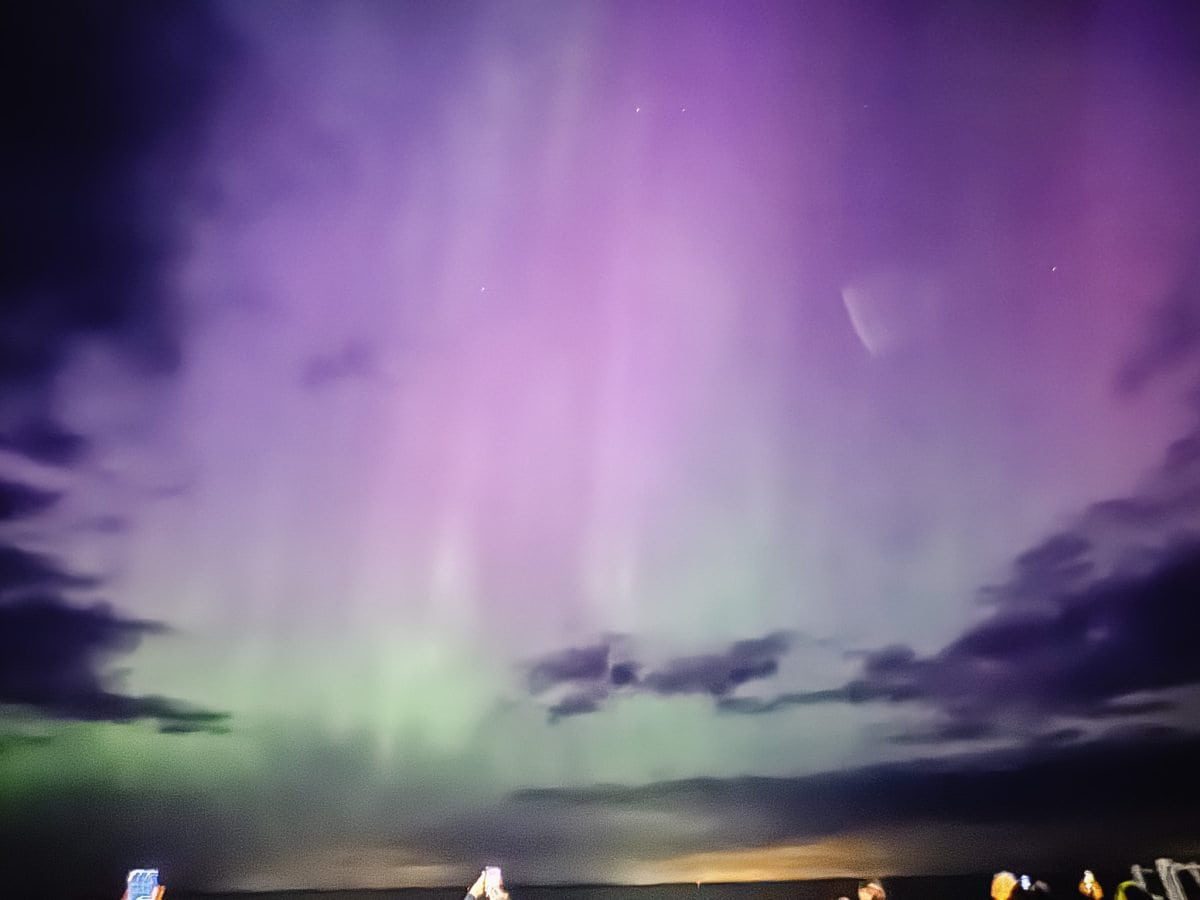
That night we caught a glimpse of the Northern Lights. Spectacular!
And while we didn’t get to go down in the submarine, we at least got to take a peek. Can’t wait to give it a try some time in the future.
Detroit, Michigan
Detroit sits on one of the four straits that link the Great Lakes to the St. Lawrence Seaway and has emerged as a city rich in culture. In 2015, it became the first US city to earn designation as a “City of Design” by UNESCO for its creativity in urban development. Detroit was founded as a fort in 1701 and later grew into the epicenter of the US automobile industry. Today the city is beloved as the birthplace of Motown, a portmanteau of “motor” and “town.” Its waterfront reveals remarkable examples of postmodern and art deco skyscrapers, and is one of the vibrant cities in the midwest.
There were a lot of tempting tour choices in Detroit, ranging from history to music to art. We opted for the included tour of the Henry Ford Museum of Innovation, and it was a great choice.
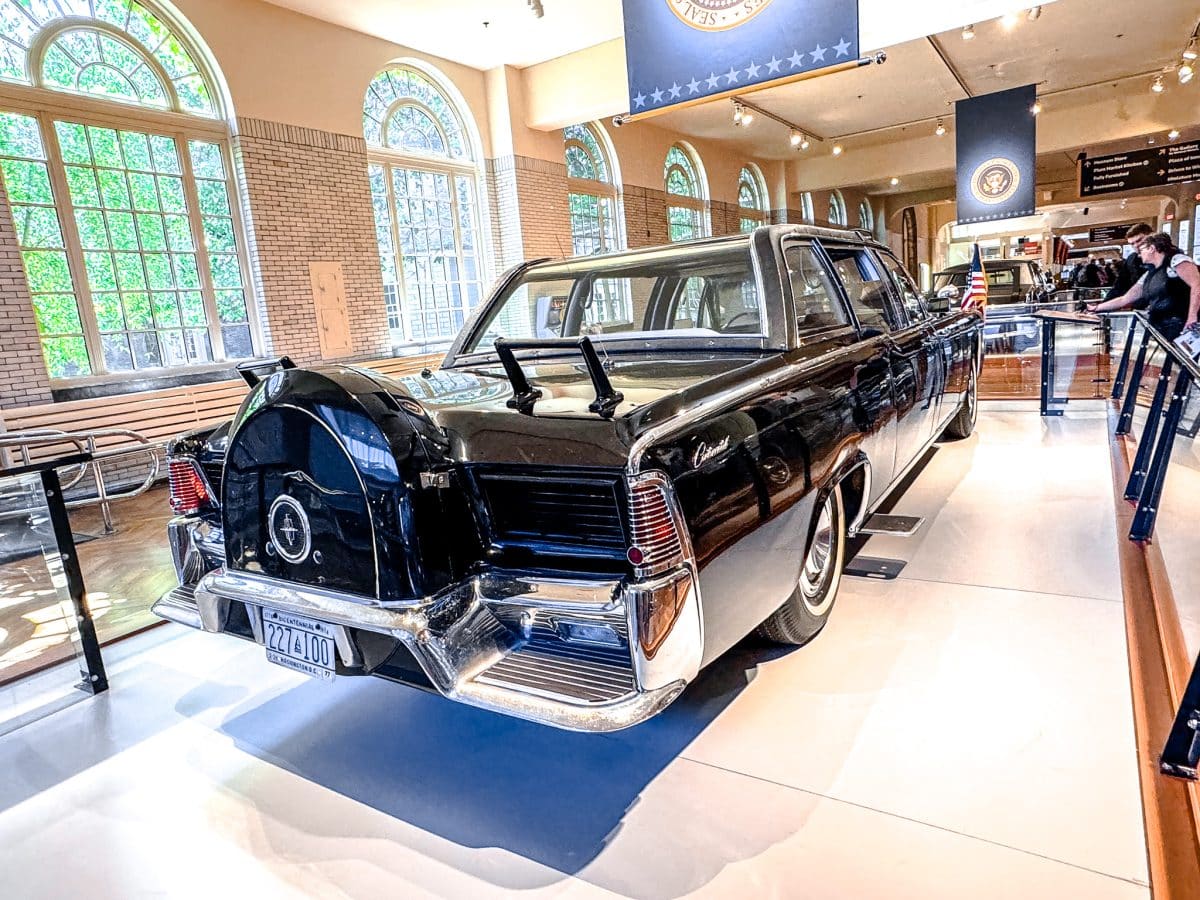
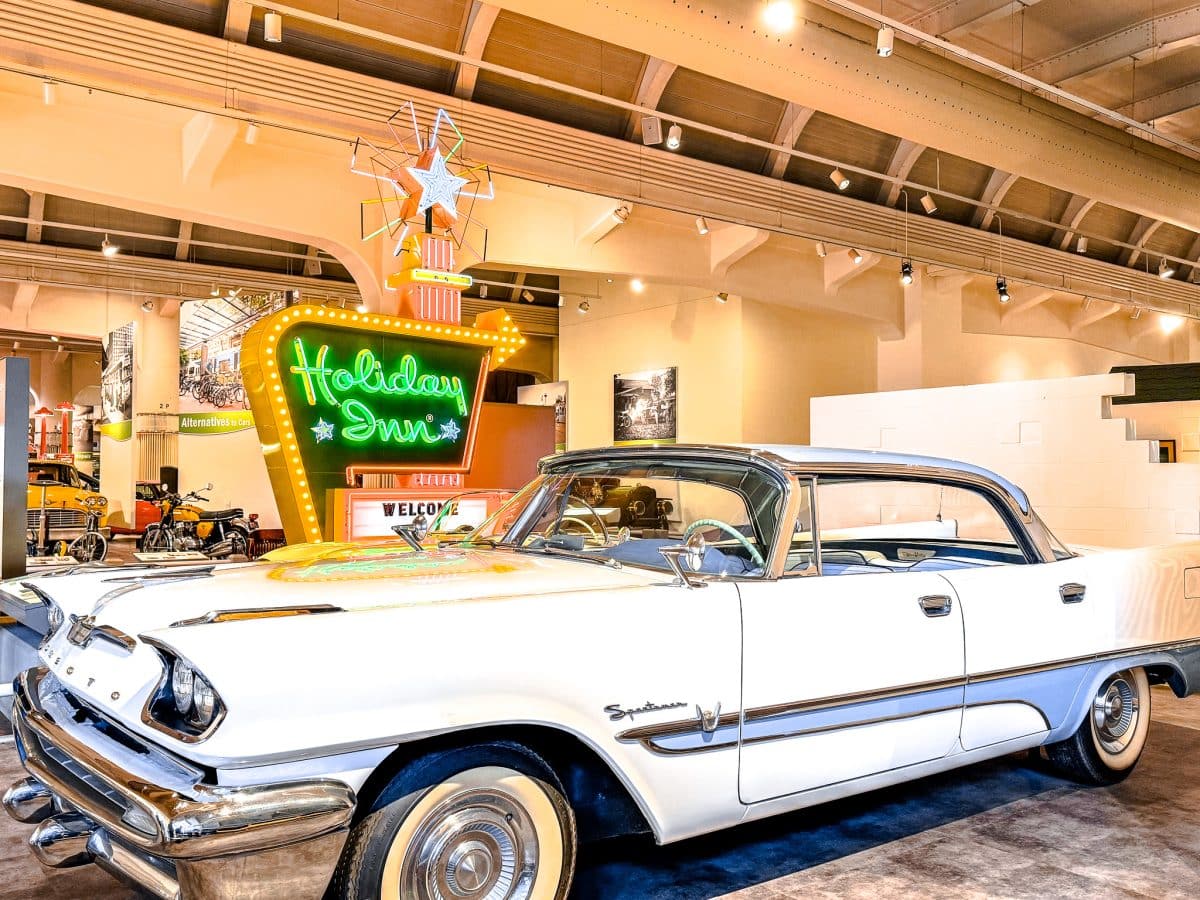
I’d heard a lot about this museum, but previous trips to Detroit didn’t have a schedule that made a visit convenient. The museum, founded by auto manufacturer Henry Ford, explores the rich history of Amerian achievement during the 20th century. The excursion is a guided tour of the museum, but once we got the general overview from our guide, we split off and to explore the areas that most interested us. Some sections that we enjoyed included the presidential limousines (especially the one President Kennedy was riding in when he was assasinated), Presidential memorabilia (President Lincoln’s chair from Ford’s theater), historically significant artifacts like the bus that Rosa Parks was riding when she refused to surrender her seat, an exhibition of racing cars, and an exhibition of the history or road trips.
We packed a lot into the three hours we were there, but there is plenty more to see.
Alpena, Michigan
Alpena is in the northeastern region of Michigan’s Lower Peninsula. The town faces Lake Huron’s Thunder Bay and is home to Alpena Light, a red steel structure built in 1914. After its founding in 1840, fishing and logging were introduced to bolster its economy; today it is home to one of the largest limestone quarries in the world. Two of its architectural gems are listed on the National Register of Historic Places: the art deco County Courthouse and the late-Victorian IOOF Centennial Building, the city’s former courthouse.
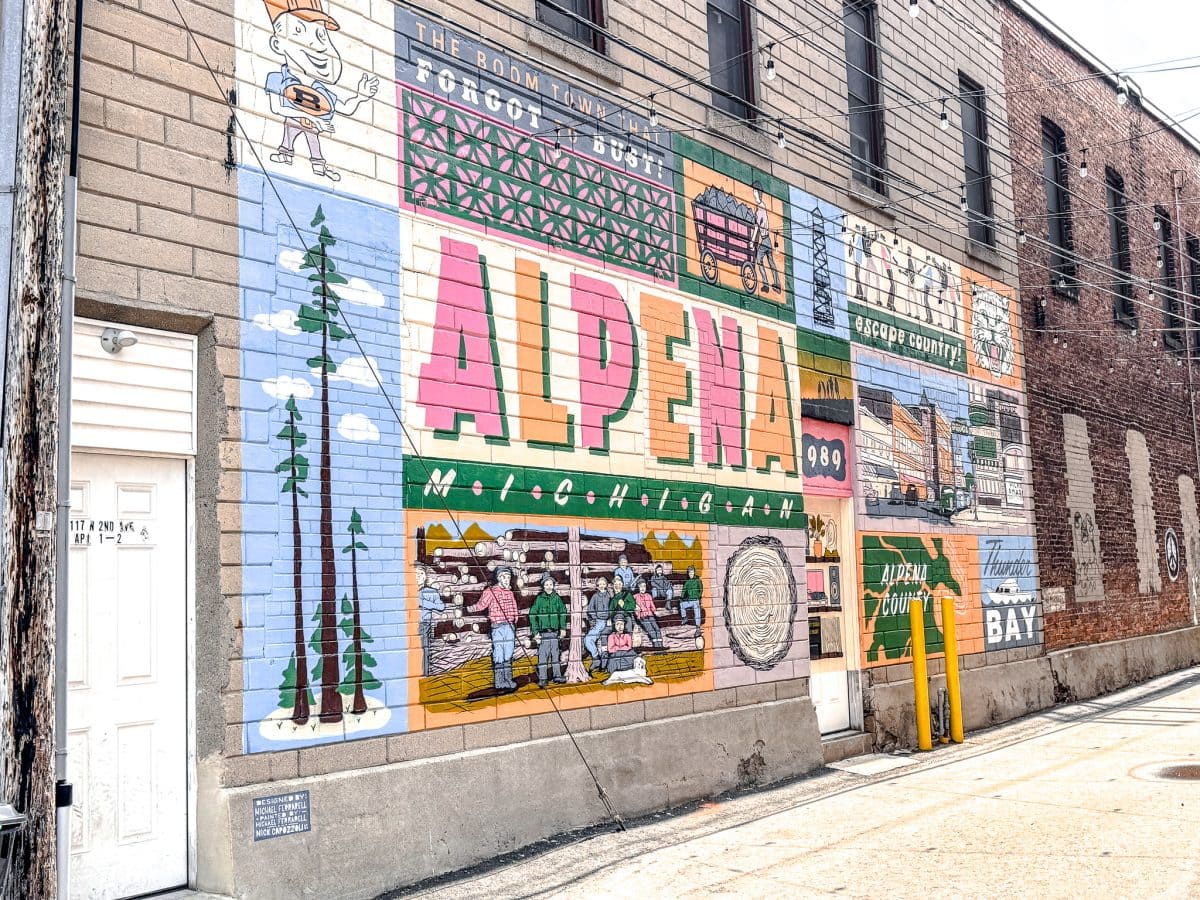
I had never heard of Alpena, called the Sanctuary of the Great Lakes, so choosing what to do there started with a blank slate. There are lots of small towns in this area that are well known loccally, but unknown to us. We decided on Alpena on Foot (included excursion) so that we could combine our interest in learning more about the small city and having some free time. We had an engaging local guide who helped us learn more Alpena as she led us through town. Following the tour, we stayed downtown for ice cream, then headed to the Great Lakes Maritime Heritage Center (free admission) to learn and understand more about the maritime history of the region.
Because we wanted to learn more about this part of the U.S., this was a good chocie for us. If you have a specific interest in maritime history, there was a boatride that crossed over famous shipwrecks.There was also a nature walk. All solid choices, depending what your interests are.
Mackinac Island, Michigan
The island is car free, with visitors getting around by bicycles, on foot, or a horse-drawn carriage. More than 80% of Mackinac is protected as a state park, from its Greek Revival Grand Hotel and British-built Fort Mackinac to its preserved wilderness areas. It feels like a simpler era, but rest assured that islanders face the same stressors as the rest of us.
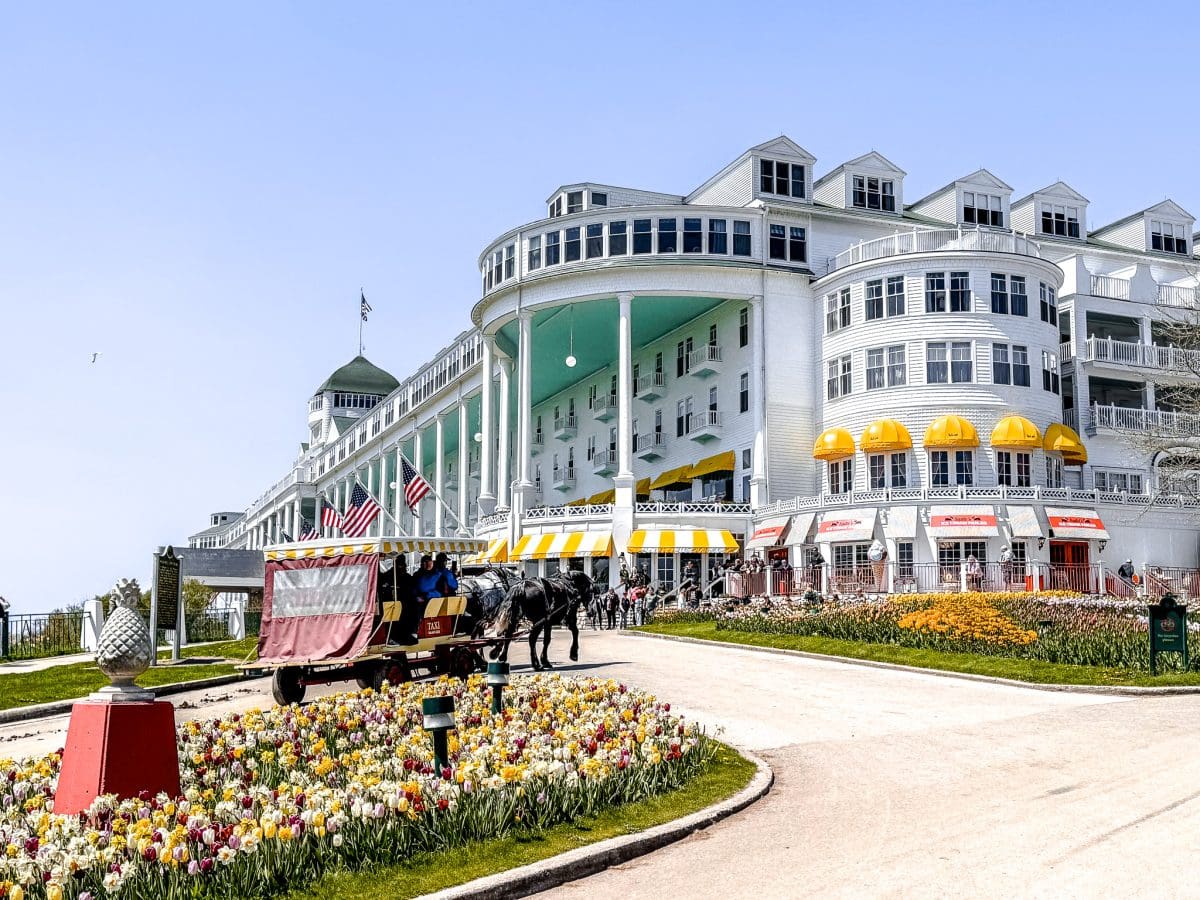
I was so excited about visiting Mackinac Island (note that the “c” at the end of the name is silent – think of it as Mackinaw). The Victorian ambiance sounded charming (a la the movie, Somewhere in Time, starring Jane Seymour and Christopher Reeve) and everyone talked about the world-famous Mackinac Island Fudge, but I wasn’t sure if it would live up to its billing. It did, especially for a first time visitor. While I suppose the commercialization of some of the island’s charm may get old, I was completely charmed by its preservation efforts to retain its yesteryear appeal.
We opted for two included excursion, Mackinac by Foot (in the morning) and Mackinac by Horse-Drawn Carriage (in the afternoon), which left us time to grab lunch at a local spot and also do a little shopping (yes, some of that fudge came home with us). The excursions were perfect choices for people who like to have a little framework on a destionation, but are predominantly independent explorers.
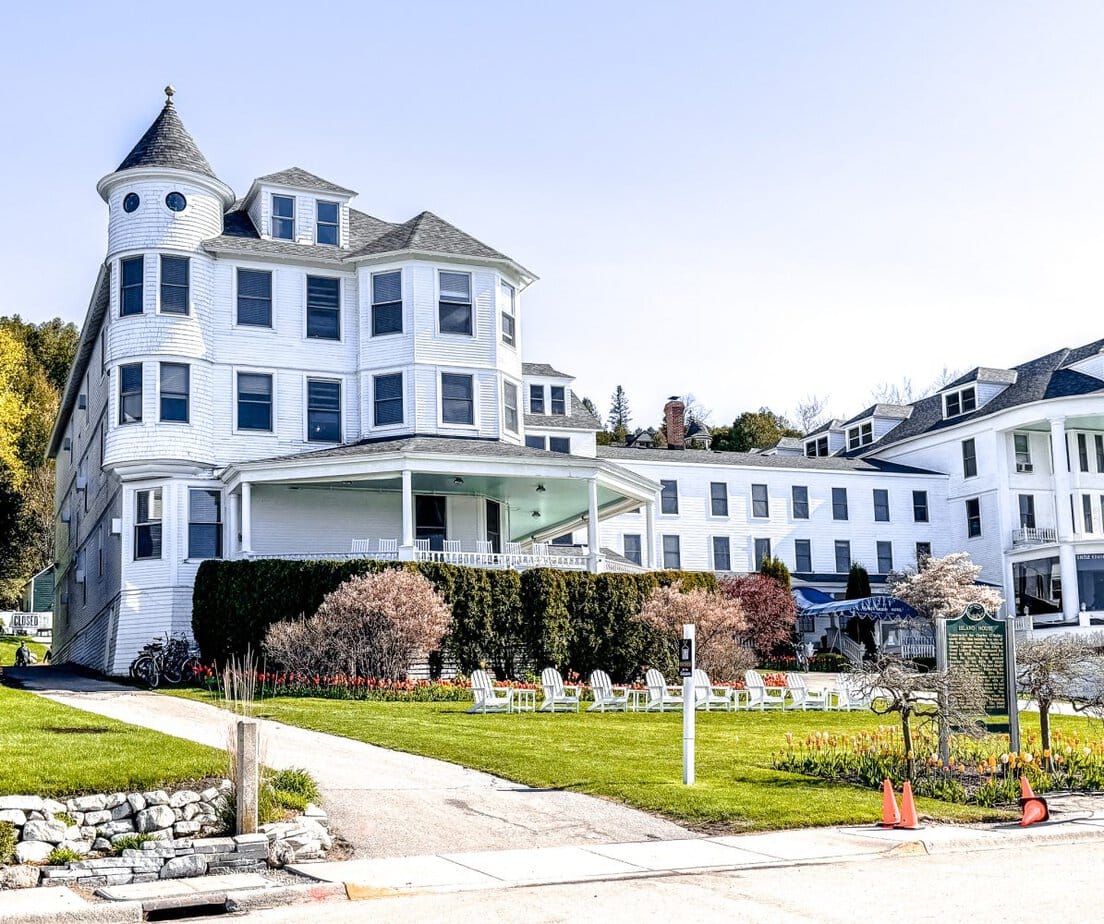
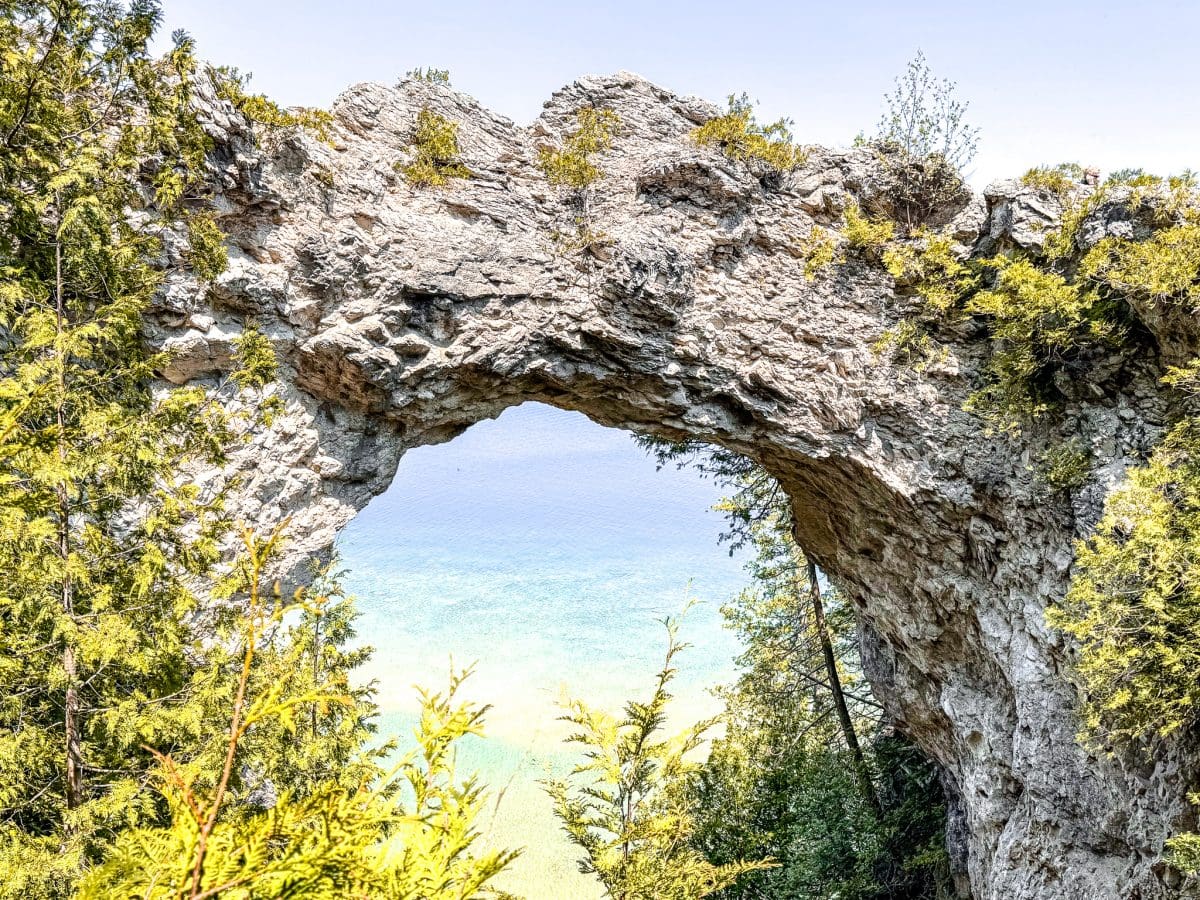
The morning walking tour was about two hours, and we saw the historical sites in the general downtown area. It was fascinating history, paced moderately, and provided a great overview for sites we went back to later. The carriage tour felt like a must-do on the island, even if it seemed like a little touristy. Who cares if it’s touristy? We are tourists! The carriage ride took us farther away from downtown, including the Victorian-era Grand Hotel, Fort Mackinac (a Revolutionary War fortress), Mackinac Island State Park, Rock Arch, and to some residential parts of the island. Both of these tours were great choices for first time visitors.
Milwaukee
Milwaukee was first settled by Europeans in 1818, when French-Canadian fur trader Solomon Juneau arrived. German, Polish and Eastern European immigrants followed, bringing with them a long tradition of beer brewing. For several decades in the 20th century, Milwaukee became the world’s most prolific beer producer. Today, the city is a vibrant center of art, history and culture. The RiverWalk, a pedestrian walkway along the Milwaukee, is a popular spot for enjoying relaxing strolls or viewing public art installations.
We’ve visited Milwaukee before and weren’t sure what we wanted to do. There was a tour to the Milwaukee Art Museum (it’s a fabulous museum, we’ve been there), and a craft beer tour (tasty, but I’m not a beer lover).There was an included highlights of the city tour, but we deided we’d already seen most of those spots.
Just when we thought we’d go off and wander the city, letting serendipity show us the way, Tony had an idea – baseball. The Milwaukee Brewers had a home game at American Family Field. We checked our arrival time, game time, and travel time. It looked like we could make it, but at worst, might miss the first inning. We talked to guest services to make sure it was doable, ordered tickets online (great seats, reasonably priced, using the secondary market), sat in the sun for a great baseball game, and after the game got to walk around the perimeter of the field.
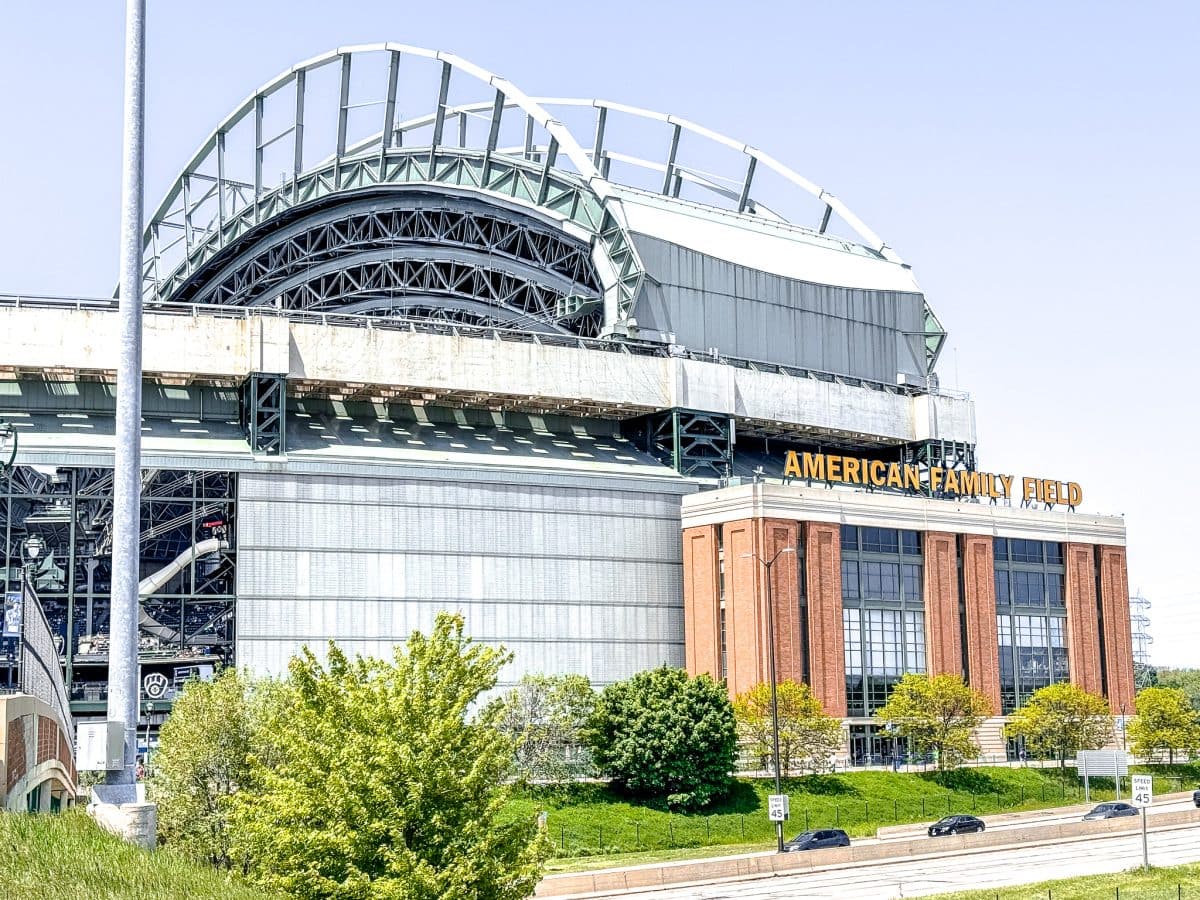
It was a GREAT day. You can look for personalized options if your ship stops in a familiar city, port visits aren’t always about taking a tour.
The following morning we disembarked in Milwaukee and headed to the airport and home.
The Price
Cruise pricing is full of special offers. You’ll find lots of bundling, two-for-ones, included air, and special discounts. Keeping up with cruise pricing can be a full-time job!
You’ll need to do your own personal research to evaluate what’s important to you on any cruise, and the price point that is comfortable for you. Armed with that information and knowledge, you can book directly with a cruise line or use travel agents with good cruise knowledge.
A quick look at 2025 Great Lakes sailings, offered in both directions, show fares starting around $6,000 per person, including air, basaed on double occupancy. Rates vary based on sail date and type of cabin. You can see 2025 and 2026 dates and pricing here.
Prices include port charges, wi-fi, at least one shore excursion in every port, use of specialty watercraft, and beer and wine at lunch and dinner.
Gratuities
Mention tipping in a group of people and it’s sure to elicit a lively discussion. I wish all service staff were paid a living wage, with consumer prices adjusted accordingly, and that tipping would cease to exist. But I also know that won’t happen any time soon. Until then, I have accepted that it is an additional expense to factor into my vacation budget.
Please do the same.
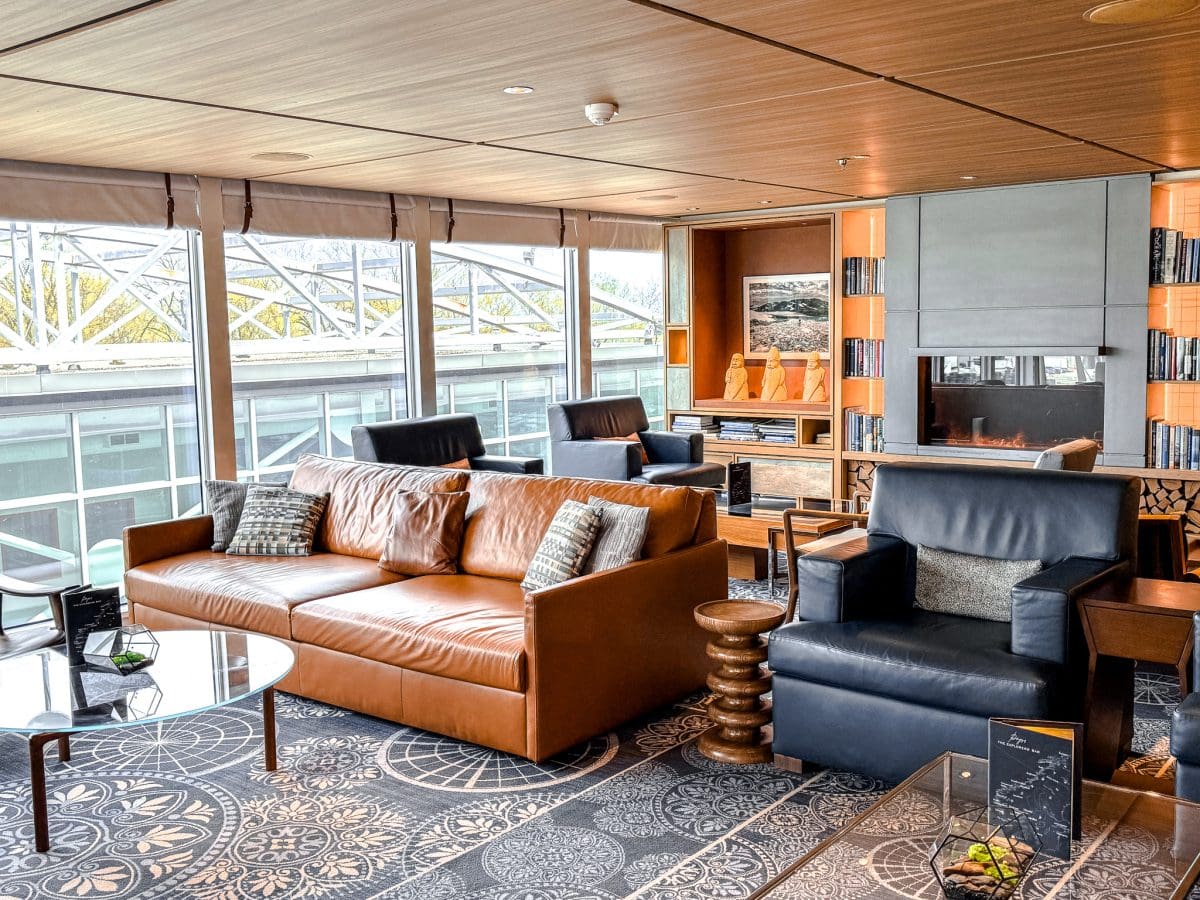
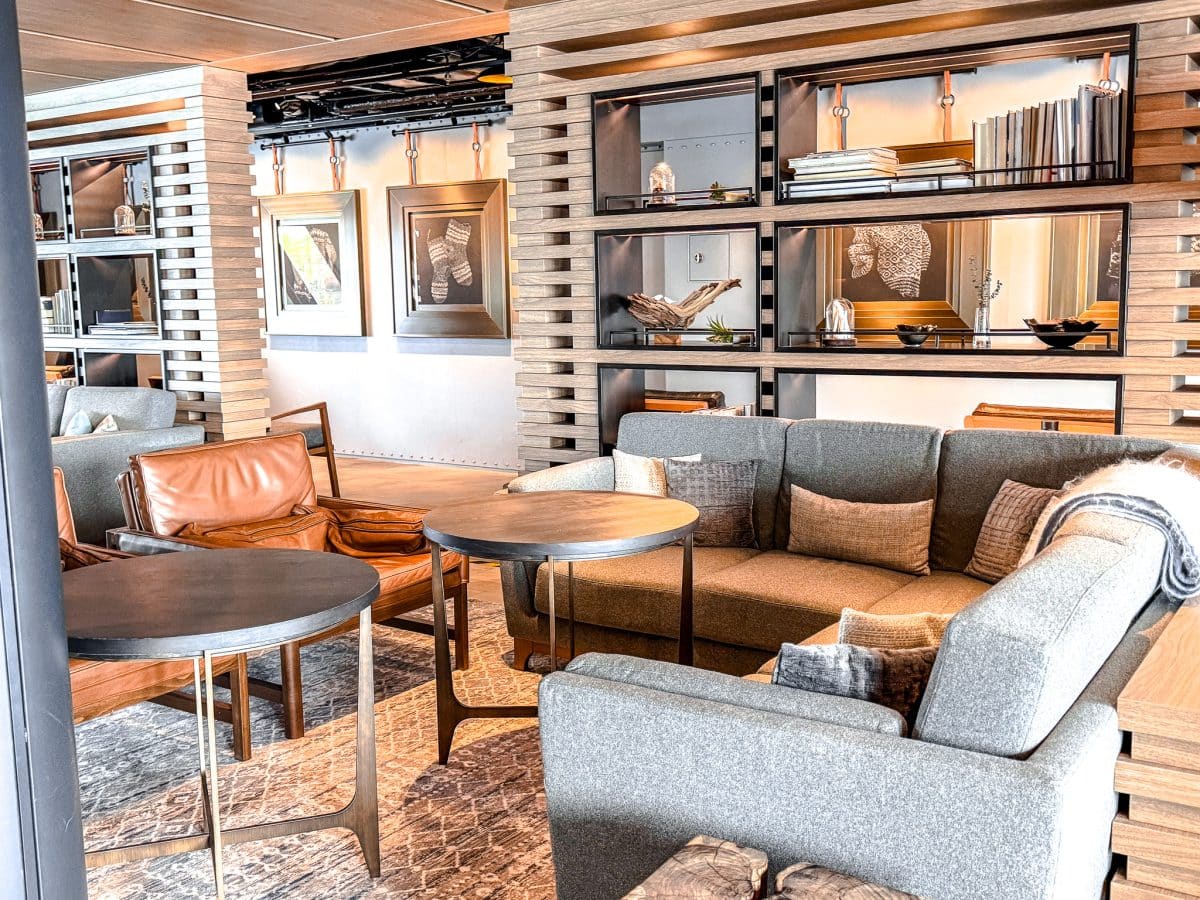
This is not the time to make a political statement about the unfairness of tipping. Your hotel and dining staff work hard for you every single day. You’ve enjoyed a stateroom that was freshened twice daily, and any request was graciously handled. The wait staff is not only busy filling water and wine glasses, but bus boys are clearing and cleaning, and servers running out meals as quickly as possible, all while accommodating special requests and helping you have a great time.
They deserve as generous of a tip as you can manage.
Viking charges a flat per person/per day fee, added to the shipboard account, to cover gratuities for the hotel and dining staff. This includes the waitstaff, stateroom stewards, galley staff, laundry staff, buffet stewards, and others. This can be pre-paid or added to your shipboard account once onboard. A 15% gratuity is added on to the bar and deck service at the time of purchase. In the salon, you can add the tip you wish at the end of your service, also added to your stateroom account.
Our personal policy is to provide additional cash tips to those staff who have been incredibly helpful and made our voyage something special. It’s always been accepted with grace and appreciation.
Is a Viking Expedition Great Lakes Cruise Right For You
We believe that there’s a cruise for everyone, it’s just a matter of matching up your preferences for size and type of ship, onboard features and amenities, and itineraries. I love all types of cruises, having some favorites of course, and I love discovering new cruise lines, new ships, and new itineraries.
Viking ships are adult-only (no one under 18), have no casinos, no formal nights, and are focused on personal enrichment. The experience is most likely to resonate with the 55+ traveler, although I thought the Great Lakes itinerary skewed slightly younger.
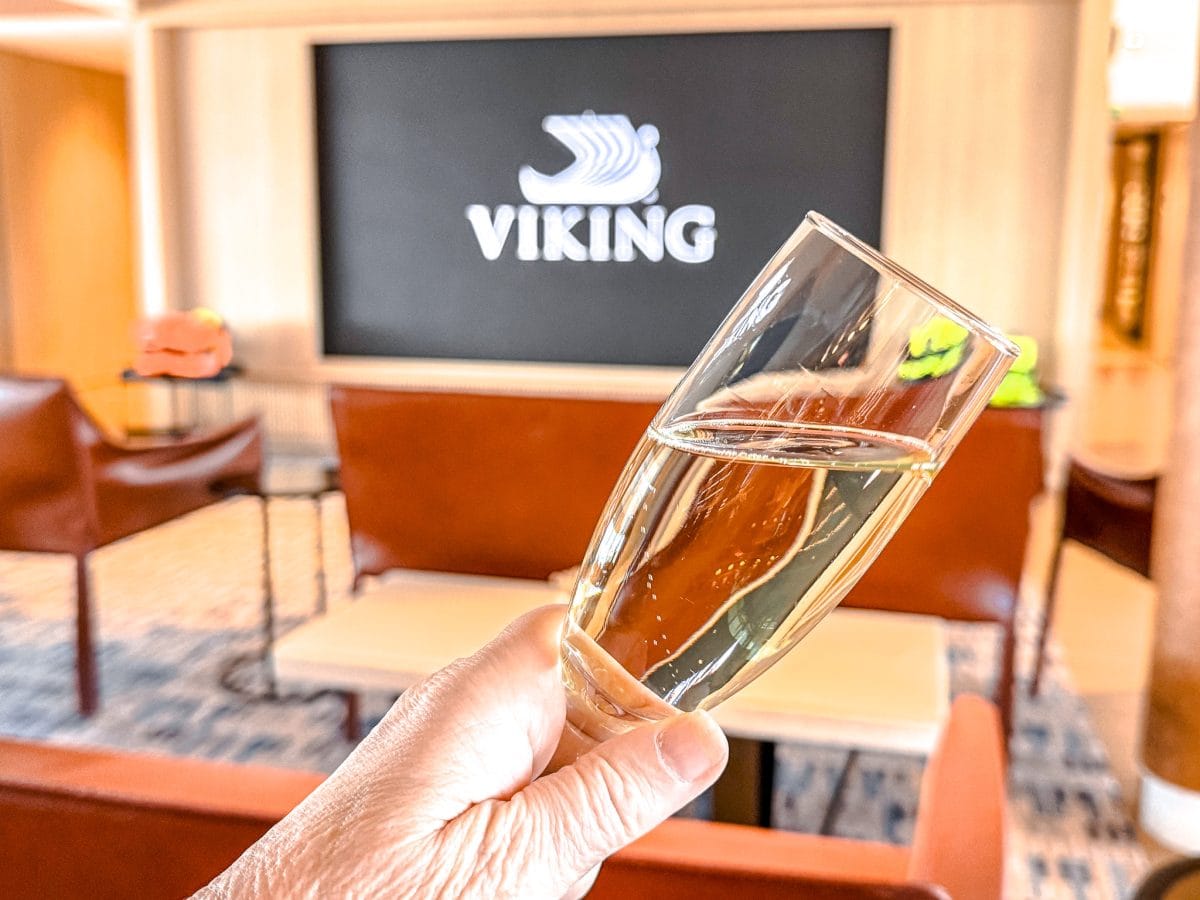
This was our first time on a Viking expedition ship, having most recently sailed on Viking Ocean in the Mediterranean (review here). The smaller ship is well suited for navigating the Great Lakes. We loved the size, the casual dining options, and an expedition staff that gave talks about science and nature. Since we haven’t explored the Great Lakes, and probably wouldn’t do much beyond major cities on our own, we enjoyed the combination of nature, history, and midwestern charm. If the Great Lakes interest you, this is a perfect cruise choice.
If, however, you’re looking to try out all the innovative watercraft (kayaks, zodiacs, special operation boats, and submarines), this may not be the best itinerary. These “toys” (as they are called) cannot be launched in U.S. waters. Since this itinerary only had one Canadia port, it meant limited opportunities. Another Great Lakes itinerary, Undiscovered Great Lakes, offers more time in Canadian waters, so more opportunities. Weather will always factor in.
Alternatively, consider an Antarctica (long on my bucket list) or polar cruise, with ample opportunities for using the “toys.”
Disclosure
We received a complimentary cruise as media covering the ship and itinerary. This post contains affiliate links.
For Pinterest
Pin to your favorite cruise and travel Pinterest boards.
